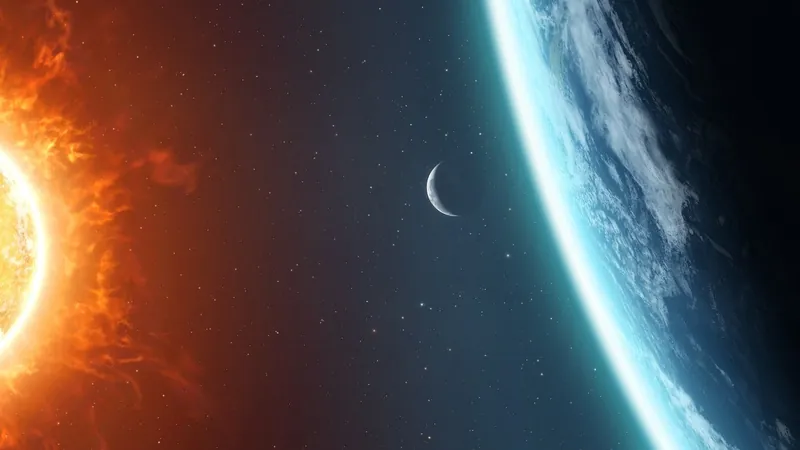
The Moon: How Far Away Is It Really? Discover Surprising Facts!
2024-10-06
When you think about how far the Moon is from Earth, you might assume the answer is straightforward. However, the actual distance to our celestial neighbor is a complex and fascinating topic that goes beyond a single figure.
The commonly cited average distance is approximately 384,400 kilometers, or about 238,855 miles. This figure is backed by experts like Craig Hardgrove, an associate professor at Arizona State University and lead investigator on the LunaH-Map mission, which aims to uncover ice deposits on the Moon.
Yet, the Moon’s orbit around the Earth isn't a perfect circle; it's elliptical. This means its distance can fluctuate significantly. At its closest point to Earth, known as perigee, the Moon can be as near as 356,470 kilometers (221,500 miles). Conversely, at its farthest point, or apogee, it can drift up to 405,600 kilometers (252,000 miles) away.
In fact, during apogee, there's enough space between Earth and the Moon that you could fit all seven other planets of our solar system (Mercury, Venus, Mars, Jupiter, Saturn, Uranus, and Neptune) in that gap if you lined them up. When you total their average diameters, they come to approximately 380,016 kilometers (236,100 miles)—a staggering thought!
The measurement of the Moon's distance has dramatically improved thanks to the Apollo missions, which left laser reflectors on its surface. Today, scientists can fire powerful lasers at these reflectors and calculate how long it takes for the light to bounce back, allowing for precise distance measurements.
Interestingly, the brightness and size of the Moon vary depending on its distance from Earth. During perigee, it appears about 14% larger and shines 30% brighter, creating breathtaking sights referred to as "supermoons." On the flip side, the Moon is called a "micromoon" when it's at its furthest apogee. Although both the distance and the lunar phases adhere to the same 27-day lunar cycle, they don't directly influence each other.
For the general populace, the average distance to the Moon suffices. However, missions aiming to land or orbit the Moon require more precise calculations. Thankfully, such calculations are less complex compared to those needed for Mars, where distances can vary by an astounding 56 million kilometers (35 million miles).
Even minor variations in distance can affect travel time, but other factors—such as trajectory, landing conditions, and solar illumination—play a more significant role during Moon missions.
NASA's Lunar Reconnaissance Orbiter project scientist Noah Petro notes a truly fascinating aspect of the Moon's journey: "In its early history, the Moon was much closer to Earth but has been gradually drifting away for over 4 billion years. We are fortunate to experience its current distance, as it allows us to witness stunning celestial events, like total solar eclipses, where the Moon perfectly obscures the Sun."
So the next time you gaze at the Moon, remember its intriguing journey of distance and time, and appreciate the cosmic dance that governs our relationship with this remarkable satellite. It's not just about how far away it is, but the breathtaking science and beauty behind it!









 Brasil (PT)
Brasil (PT)
 Canada (EN)
Canada (EN)
 Chile (ES)
Chile (ES)
 España (ES)
España (ES)
 France (FR)
France (FR)
 Hong Kong (EN)
Hong Kong (EN)
 Italia (IT)
Italia (IT)
 日本 (JA)
日本 (JA)
 Magyarország (HU)
Magyarország (HU)
 Norge (NO)
Norge (NO)
 Polska (PL)
Polska (PL)
 Schweiz (DE)
Schweiz (DE)
 Singapore (EN)
Singapore (EN)
 Sverige (SV)
Sverige (SV)
 Suomi (FI)
Suomi (FI)
 Türkiye (TR)
Türkiye (TR)